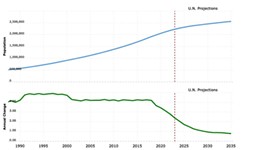Federal Funds Flow Into Waterloo’s “Confluence”
A creek runs through it, still
By Mike Clark-Madison, Fri., April 29, 2022

Someday, it's possible that the name of Waller Creek will become Waterloo Creek, just like that, in the minds of later Austinites. The $25 million flood control tunnel that Austin voters approved in May 1998 has become the $265 million Waterloo Greenway project that has rebranded the watercourse on the east side of Downtown, where the pre-Austin settlement of Waterloo was. (The Greenway doesn't extend north of 15th Street, through the UT campus and into Hyde Park; that's still just Waller Creek.)
The combined drainage, parks, and arts project became real last summer when Waterloo Park between 12th and 15th reopened to the public after being closed for construction for just shy of 10 years (since November 2011). Now, attention is shifting to the other end of the creek, south of Fourth Street to Lady Bird Lake. This used to be just the mouth of Waller Creek, then it became the Waller Creek Delta, and now it is also "The Confluence." It is still where the tamed, nonflooding creek meets its river, and as such the federal government, and specifically the U.S. Army Corps of Engineers, can get involved. The Corps' District Commander Col. Jonathan Stover, in full dress uniform, joined U.S. Rep. Lloyd Doggett, Mayor Steve Adler, staff from the watershed and parks departments, and Waterloo Greenway CEO Jesús Aguirre on Monday inside the Fairmont, overlooking the creek as the first big rain in weeks filled it up, to celebrate $9 million in funding for Waller Creek restoration, included in the Infrastructure Investment and Jobs Act. That's the "bipartisan" infrastructure bill that none of Doggett's four GOP colleagues currently representing parts of Austin, including the Confluence, voted for.
This is the first federal funding for Waller Creek and Waterloo Greenway, the first IIJA funding to be spent in Austin (there may be more for Project Connect, electric vehicle charging hubs, and other things), and "the first environmental infrastructure project to ever be approved in the state of Texas," Doggett told attendees. That is, the first for the USACE's Ft. Worth District, which is used to building flood control and water supply facilities for which aesthetics have been secondary. People who follow such things know that by "Army Corps," one can describe projects like the concrete channelization of Boggy Creek through East Austin, which the Corps built in the early 1980s.
That simply won't do for what's supposed to be an urban amenity befitting a big and rich city like Austin, our equivalent to Manhattan's High Line. So instead, the Army Corps under a Democratic commander in chief will plant out about 13 acres of land that, pre-tunnel, lay in the path of high-speed Waller Creek floodwaters that both destroyed the creekbed and killed people. More than 1,500 trees and 200,000 plants, along with abundant seeding, will firm up the reconstructed creek banks from Palm Park to the lake, both the deepest and the most ecologically diverse stretch of the creek. This will also clean and cool the air around this often traffic-choked and sunbaked slice of Downtown, it is expected.
This doesn't just represent a paradigm shift for the Army Corps, but also reflects the fact that Austin tried for about a decade, starting way back in 1976, to turn this downstream leg of Waller Creek into a more hardscaped public open space and trail like what the Corps has helped to build along the San Antonio River (also in Doggett's district, for now) for nearly a century, and it got wrecked repeatedly. There's not as much new programmable public space as seen at Waterloo Park's Moody Amphitheater planned for the Confluence, whch already has big neighbors with lots of programmable space, from the Convention Center and Fairmont south past the Mexican American Cultural Center and along Rainey Street to the lake. That supply of cool Austin places to do things may also grow with new "cap-and-stitch" green spaces mounted above the to-be-lowered I-35 mainlanes, a block or two east of the Confluence.
Got something to say on the subject? Send a letter to the editor.








